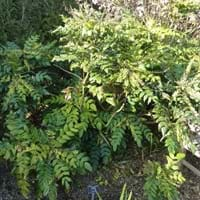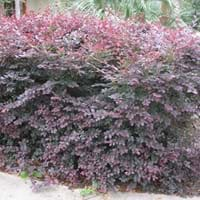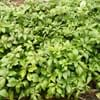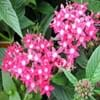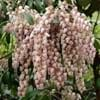Life Span
Perennial
Perennial
Type
Broadleaf Evergreen
Broadleaf Evergreen
Origin
China
China, Japan
Types
Mahonia bealei, Mahonia japonica, Mahonia shenii
Little Rose Dawn, Hines Purpleleaf, ‘Shang-hi
Number of Varieties
Not Available
Habitat
Dry areas, Open areas
gardens, Hillside, open Woodlands, Roadsides, Rocky areas, Stream side, Woodlands
USDA Hardiness Zone
6-10
6-9
AHS Heat Zone
Not Available
Not Available
Habit
Upright/Erect
Oval or Rounded
Flower Color
Yellow, Lemon yellow
White
Flower Color Modifier
Bicolor
Bicolor
Fruit Color
Dark Blue, Black
Brown
Leaf Color in Spring
Green, Dark Green
Green, Bronze
Leaf Color in Summer
Dark Green
Green
Leaf Color in Fall
Dark Green
Green
Leaf Color in Winter
Dark Green
Green
Plant Season
Spring, Summer, Fall, Winter
Spring, Summer, Fall, Winter
Sunlight
Full Sun, Partial Sun, Partial shade
Full Sun, Partial Sun, Partial shade
Type of Soil
Clay, Loam
Loam
The pH of Soil
Acidic, Neutral
Acidic, Neutral
Soil Drainage
Average
Average
Bloom Time
Late Summer, Early Fall
Early Spring, Late Winter
Tolerances
Not Available
Drought
Where to Plant?
Container, Ground, Pot
Container, Ground
How to Plant?
From Rhizomes
Seedlings, Transplanting
Plant Maintenance
Medium
Low
Watering Requirements
Allow to dry out slightly between watering
Do Not over Water
In Summer
Lots of watering
Lots of watering
In Spring
Moderate
Consistently
In Winter
Average Water
Ample Water
Soil pH
Acidic, Neutral
Acidic, Neutral
Soil Type
Clay, Loam
Loam
Soil Drainage Capacity
Average
Average
Sun Exposure
Full Sun, Partial Sun, Partial shade
Full Sun, Partial Sun, Partial shade
Pruning
Remove damaged leaves, Remove dead leaves
Prune to control growth
Fertilizers
Mulch, slow-release fertilizers
All-Purpose Liquid Fertilizer, Fertilize three times a year
Pests and Diseases
Galls, Insects, Leaf spot, Rust, Scale, Whiteflies
Bacterial Gall
Plant Tolerance
Not Available
Drought
Flower Petal Number
Single
Single
Foliage Texture
Medium
Medium
Foliage Sheen
Matte
Matte
Attracts
Birds
Not Available
Allergy
Heartburn, Itchiness, Skin irritation
Not Available
Aesthetic Uses
Ground Cover, Showy Purposes
Showy Purposes
Beauty Benefits
Not Available
Not Available
Environmental Uses
Air purification, Food for insects
Not Available
Medicinal Uses
Diarrhea, Digestion problems, Eye Problems, Intestinal irritations
No Medicinal Use
Part of Plant Used
Leaves
Whole plant
Other Uses
Used for its medicinal properties
Used as Ornamental plant
Used As Indoor Plant
No
No
Used As Outdoor Plant
Yes
Yes
Garden Design
Container, Foundation, Houseplant, Mixed Border
Container, Feature Plant, Foundation, Hedges, Mixed Border, Screening, Wind Break
Botanical Name
MAHONIA fortunei
LOROPETALUM chinense
Common Name
Mahonia
Loropetalum, Chinese fringe flower
In Hindi
Mahonia
Loropetalum
In German
Mahonia
Loropetalum
In French
Mahonia
Loropetalum
In Spanish
Mahonia
Loropetalum
In Greek
Mahonia
Loropetalum
In Portuguese
mahonia
Loropetalum
In Polish
Mahonia
Loropetalum
In Latin
Mahonia
Loropetalum
Phylum
Magnoliophyta
Spermatophyta
Class
Magnoliopsida
Dicotyledonae
Order
Ranunculales
Saxifragales
Family
Berberidaceae
Hamamelidaceae
Genus
Mahonia
Loropetalum
Clade
Angiosperms, Eudicots
Angiosperms, Core eudicots, Eudicots
Tribe
Not Available
Not Available
Subfamily
Not Available
Not Available
Number of Species
Not Available
Properties of Mahonia and Loropetalum Chinese
Wondering what are the properties of Mahonia and Loropetalum Chinese? We provide you with everything About Mahonia and Loropetalum Chinese. Mahonia has thorns and Loropetalum Chinese doesn't have thorns. Also Mahonia does not have fragrant flowers. Mahonia has allergic reactions like Heartburn, Itchiness and Skin irritation and Loropetalum Chinese has allergic reactions like Heartburn, Itchiness and Skin irritation. Compare all the properties and characteristics of these two plants. Find out which of these plant can be used as indoor plant. If you are interested to decorate your house and garden, find out aesthetic uses, compare them and select the plant which will beautify your surrounding. Along with beautification, try comparing medicinal and edible uses of Mahonia and Loropetalum Chinese and you can choose the plant having best and most benefits.
Season and Care of Mahonia and Loropetalum Chinese
Season and care of Mahonia and Loropetalum Chinese is important to know. While considering everything about Mahonia and Loropetalum Chinese Care, growing season is an essential factor. Mahonia season is Spring, Summer, Fall and Winter and Loropetalum Chinese season is Spring, Summer, Fall and Winter. The type of soil for Mahonia is Clay, Loam and for Loropetalum Chinese is Loam while the PH of soil for Mahonia is Acidic, Neutral and for Loropetalum Chinese is Acidic, Neutral.
Mahonia and Loropetalum Chinese Physical Information
Mahonia and Loropetalum Chinese physical information is very important for comparison. Mahonia height is 90.00 cm and width 120.00 cm whereas Loropetalum Chinese height is 180.00 cm and width 180.00 cm. The color specification of Mahonia and Loropetalum Chinese are as follows:
Mahonia flower color: Yellow and Lemon yellow
Mahonia leaf color: Green and Dark Green
Loropetalum Chinese flower color: White
- Loropetalum Chinese leaf color: Green and Bronze
Care of Mahonia and Loropetalum Chinese
Care of Mahonia and Loropetalum Chinese include pruning, fertilizers, watering etc. Mahonia pruning is done Remove damaged leaves and Remove dead leaves and Loropetalum Chinese pruning is done Prune to control growth. In summer Mahonia needs Lots of watering and in winter, it needs Average Water. Whereas, in summer Loropetalum Chinese needs Lots of watering and in winter, it needs Ample Water.
